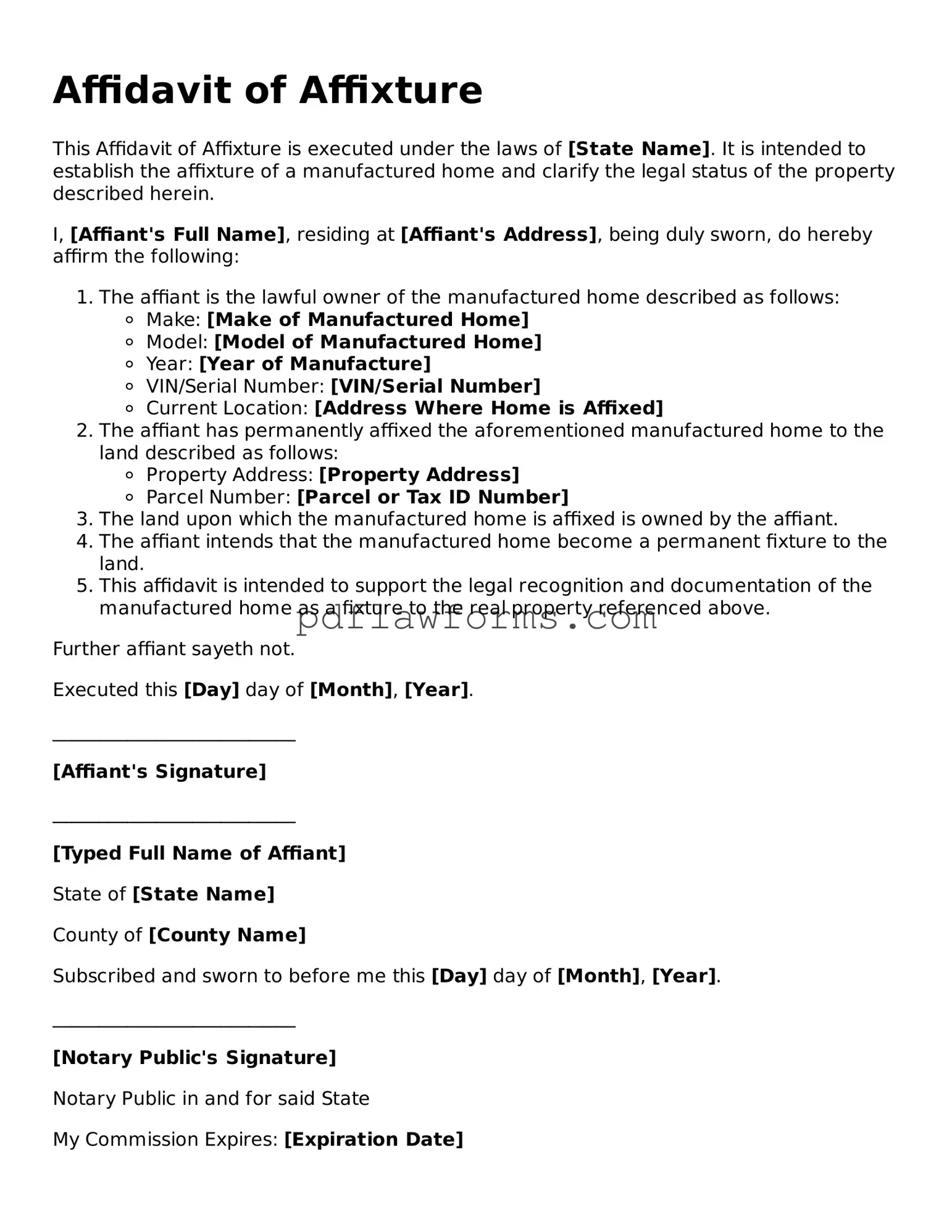Official Affidavit of Affixture Form
The Affidavit of Affixture is a legal document used to establish that a mobile home has been permanently affixed to a piece of real property. This form serves to clarify ownership and ensure that the mobile home is treated as part of the real estate for legal and tax purposes. Understanding how to properly fill out this form is essential for homeowners looking to secure their property rights; start the process by clicking the button below.
Make My Document Online
